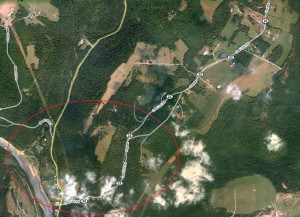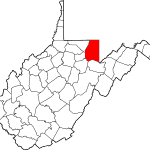Verizon issued a press release this morning celebrating the availability of DSL service to nearly 200 new lines in Albright, West Virginia. They even pinpointed the service expansion to “areas along Coal Lick Road near the intersection of Route 22 and 26.”

Satellite image showing the sparsely populated Coal Lick Road/Rt. 26 Intersection (click to enlarge)
While that presumably makes residents on Coal Lick Road happy, vast areas of West Virginia remain unserved by DSL or any other broadband service option, except for prohibitively expensive satellite Internet. Preston County has 30,000 residents spread 0ut over 651 square miles, and is typical of many sparsely populated counties in West Virginia. The nearest large city is Pittsburgh, Pennsylvania.
Verizon has stopped referring to its broadband solution for copper wire telephone networks as “DSL,” now marketing it as “Verizon High Speed Internet” instead. Speed is in the eye of the customer, however. Like most rural areas with Verizon DSL, the entry level tier offers speeds only up to 1Mbps downstream and 384kbps for the upstream. Customers willing to pay more can select the “premium” service offering up to 3Mbps downstream and 768kbps upstream. In larger towns and smaller cities, service up to 7.1Mbps may be available.
“Verizon is enabling more residents and businesses across West Virginia to make the high-speed connections that are important to them,” said B. Keith Fulton, president of Verizon West Virginia. “Verizon’s investment in the Albright area means that more customers have access to affordable High Speed Internet service, backed by the reliability and security of Verizon’s network.”
Verizon is also demonstrating its commitment to West Virginia by leaving the state, intending to sell off its telephone service to Frontier Communications, a deal still pending regulatory approval.
For West Virginia, broadband expansion to just a few hundred homes, warranting a press release, demonstrates the incremental, slow progress of broadband expansion outside of urban America.


 Subscribe
Subscribe
